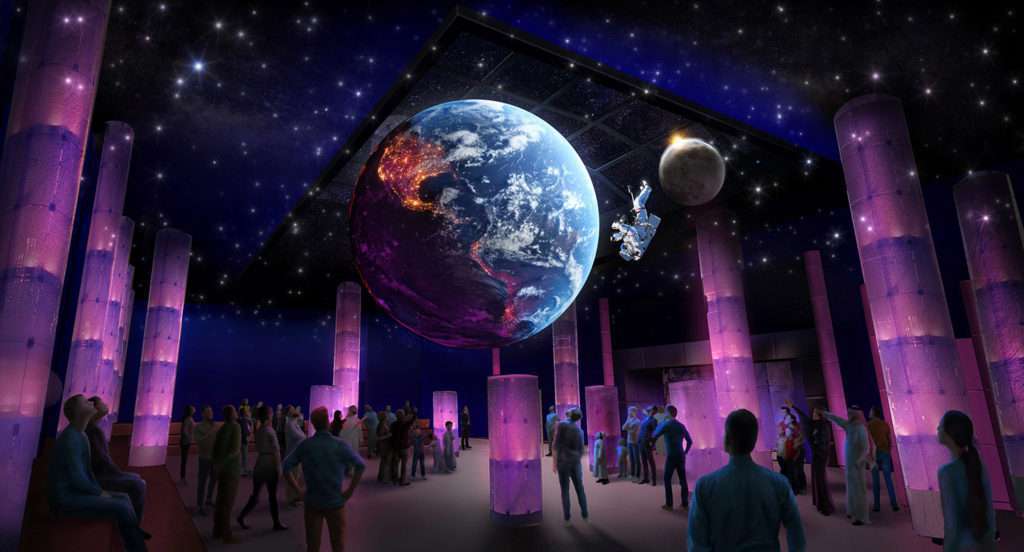By Jim Ogul
I recently reported that the State Department has requested $2 million from Congress in startup money for a U.S. Pavilion at Expo 2025 Osaka Kansai. This is a world’s fair sanctioned by the Bureau International des Exhibitions (BIE).
In the world’s fair universe and the history of US participation, this request is big news – because it’s the first time there has been such a request in 30 years.
And yes, world’s fairs still happen – in fact, there have been 11 world expositions hosted in Europe and Asia in the past 30 years, drawing a combined audience of 221 million visits, and the first in the Middle East will open its gates in October 2021. US participation in those expos has been somewhat uneven. Moreover, there has not been a world expo hosted in the U.S. since 1984 (or in North America since 1986).
Federal appropriations requests in the U.S. have been long absent all those years because, beginning in 1994, Congress passed laws imposing roadblocks to Federal funding for these events. Under current law, the U.S. is the only G7 country that relies on private donations to guarantee its presence at world expos, and the only country in the world that relies entirely on private funding for the creation of its pavilion.
A primary rationale from Congress has been that U.S. Pavilions could and should be funded by the private sector. But this has proven very problematic.
In all, since Federal funding dried up, the United States has participated in nine world’s fairs but missed being part of the expos in Hanover, Germany in 2000 and Zaragoza, Spain in 2003. In the case of Hanover, the U.S. was simply unable to raise the needed money and had to pull out. In the case of Zaragoza, the U.S. did not accept an invitation. In all instances, reliance on private sector fundraising has caused delays, design compromise and the risk of not participating at all.
Even when sufficient money has been raised, there has been criticism of the pavilions as overly commercial, devoting too much space for corporate messages. But commercialization is a fact of life, and a pavilion entirely dependent on private contributions cannot escape this.
Not only is it difficult to raise the large amounts needed, but cash flow can be a killer. Work that must be done early on comes at a time when fundraising is just ramping up. In many cases, contractors have been asked to work on the promise of later being paid as apparently was the case at Milan (2015). At Milan this caused a large overrun when the fundraising program failed to raise sufficient funds. As a result, contractors that did work on the promise of being paid lost $26 million. The State Department contractor that sub-contracted these contractors declared bankruptcy and as a result the contractors never got their money.
In other cases, contractors have opted to simply stop work until they could be paid. These work stoppages on complicated and intertwined tasks have sometimes had a crippling effect on getting the project done on time and within budget. In the days when Federal funding was the sole source, the money was all there upfront, eliminating these and other issues.

And for the most recent example of the pitfalls of reliance on fundraising, despite a two-year fundraising campaign the State Department was unable to raise private sector support for a U.S. Pavilion at Expo 2020 Dubai. It subsequently appealed to Congress for Federal funding and was denied. Ultimately, the UAE offered to pay for the pavilion and the U.S. Government accepted. This is the first time in history that a U.S. Pavilion at a world’s fair was paid for by the host country, in this case the United Arab Emirates.
I feel strongly that the U.S. needs to revert to Federal funding – perhaps relying on corporate sponsorship for special events, but not to fund bricks-and-mortar or operations. I think that 30 years is long enough to prove that if we are to participate at all in worlds’ fairs, the U.S. should consider such participation a diplomatic priority and make the necessary investments to provide a U.S. Pavilion that best tells America’s story to the millions of world visitors attending these mega-events.






